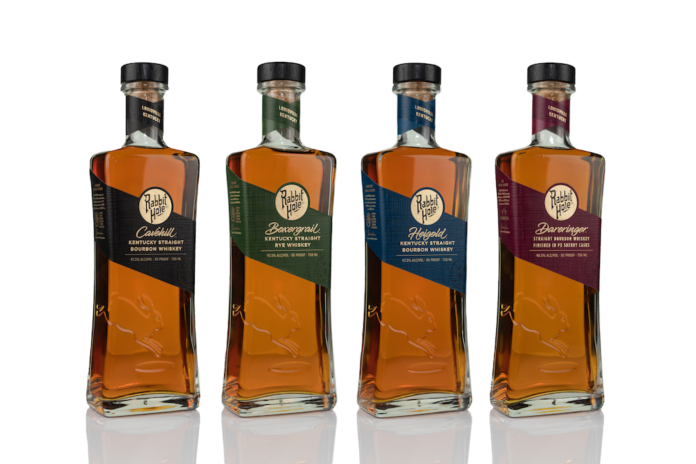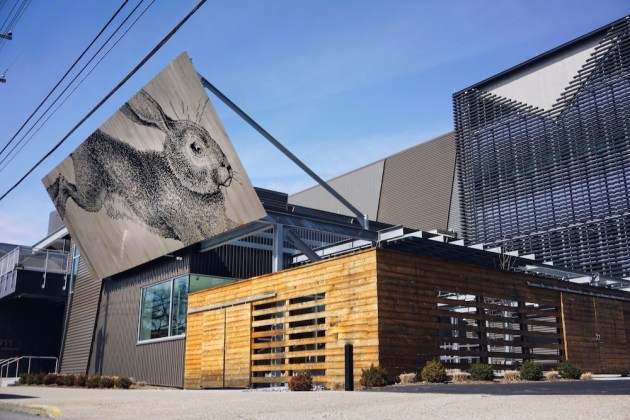As part of our look early in 2021 at this year’s top whiskey trends, we recently interviewed Kaveh Zamanian, founder and whiskey maker of Rabbit Hole Distillery.
Rabbit Hole remains one of the fastest growing craft distilleries in America. Fueled by a partnership with Pernod Ricard in 2019, this Louisville-based producer is set to start construction on three new 8,000-gallon fermentation tanks — greatly expanding production. Rabbit Hole in 2019 completed a state-of-the-art rickhouse made entirely of steel. Located in the Henry County town of Campellsburg, Kentucky, the 15,000-square-foot rickhouse boasts a 15,000 barrel capacity. In 2020, Rabbit Hole built its second steel warehouse, increasing capacity to 20,000 barrels.
For a brand launched in 2012, Rabbit Hole has quickly made a mark in the industry. The distillery also produces more than whiskey, including a recent rye-aged gin release. Below, we chat with Zamanian about what he sees for the industry this coming year.
Beverage Dynamics: What whiskey innovations will define 2021?
Kaveh Zamanian: I don’t think there’s going to be a significant draw back from barrel finishing, but I do believe that innovation in American whiskey is going to go beyond finishing projects. Flavor of a grain is a defining characteristic of all whiskeys and similar to a culinary master, the type of ingredients that are used to create a whiskey — along with the actual process of how whiskey is made — is the future of American whiskey from an innovation standpoint. For us, type and source of grains — particularly the use of malted grains, which already is a defining part of our whiskeys — is a choice that will continue to drive innovation at Rabbit Hole, and will ultimately allow us to continue to deliver excitement and variation to the marketplace.
BD: How important are quality and consistency right now?
KZ: Right now, many Non-Distilling Producers (those without a distillery) are buying sourced liquid and blending it in small batches. There’s very little barrier to entry to this, and a relatively low degree of difficulty when it comes to ensuring that the liquid is of high quality and tastes the same, bottle to bottle. Frankly, that’s not very exciting to me, and we’re seeing that true whiskey lovers are starting to catch on to the complexity and depth of flavor that is best delivered through unique recipes. To me, nothing worthwhile is easy.
For me, what is both challenging and exciting is creating one-of-a-kind whiskey expressions, from grain to bottle and scaling production, so you have a truly unique, high-quality whiskey that is produced and delivered to consumers consistently. So there’s nothing more important than quality and consistency especially when innovation is at play.

BD: Do consumers not care whether whiskey is sourced?
KZ: At this point in time, probably not, because the average consumer doesn’t know the difference between DSP (distillers who actually produce whiskey at their permitted distillery), NDP (Non-Distilling Producers) or CDP (Contract-Distilling Producers), and there are no federal guideline requirements for a DSP designation on the bottle, as is with NOM designation on bottles of Mezcal or Tequila. As consumers become more educated and discerning, I believe they will care. Right now, we’re in the wild west phase of American whiskey. Everyone wants to get in the game and sourcing is an easy and relatively inexpensive way of doing it, but in time, discerning consumers (the key word being discerning), discerning consumers who care about originality and quality are going to demand diversity of flavor and differentiation. That’s why from the beginning, I made sure that every expression of Rabbit Hole is a personal creation.
BD: Will premium blends take off?
KZ: I think there is an opportunity for blended American Whiskey, and a number of brands have blended expressions that are quite good. But as producers we have to better define the nomenclature of American whiskey so that consumers are able to understand differences between bourbon, rye, finished bourbons and single malts, as well as blended and flavored whiskeys.
BD: Will whiskey terroir become a thing?
KZ: Depends on how you define terroir. If you’re considering all the natural environmental elements surrounding production — on the front end: source of grain, water, yeast, microclimate of the distillery, choice of barrels; and on the back end: location of the warehouse, climate, temperature, humidity and the atmosphere that surrounds it — then yes, terroir can be applied to American whiskey and can generate increased excitement in the category. To me, one of the special attributes of Kentucky is its climate, seasonality, topography and its natural elements. The ebb and flow of seasons contribute so much to the liquid in the barrel, creating a unique expression of Kentucky terroir. If you consider flavor in relation to genetic and epigenetic factors, terroir makes great sense to American whiskey.
BD: How about American single malts?
KZ: This is an extremely exciting category that I believe is going to grow in the coming years. For me, it’s exciting in part because there is no source for American single malt whiskey. You can’t just buy and bottle it, you have to create it from scratch and with the number of malting houses and range of specialty malted grains — it is a whiskey maker’s dream. For me, like a chef, it all starts with a desire to work with an ingredient, and just thinking about the array of malted grains makes me feel like a kid in a candy store. Thank goodness we have our distillery in the heart of Louisville, where I can create and experiment to make my dreams come true. Ultimately, it is also about being able to read the tealeaves and have the foresight and commitment to lay down liquid, and I’m so proud to say that we have a number of single malt projects in the works. I can’t wait to be able to share them with you.
BD: Is there room for more new brands, or are whiskey shelves becoming overpacked?
KZ: There is room for new brands, but only if there is originality. At this moment in time, there’s a lot of good whiskey on the shelf, but there tends to be a lack of differentiation outside of branding. True whiskey producers are part artists, part scientists, and just like a great work of art or scientific advancement, their products are doing something original and unique. As mentioned earlier, buying somebody else’s liquid that’s already prevalent in the market and putting it in a bottle is not very exciting or unique, so I hope that the future brings new products that speak to originality and differentiation. In that instance, I would actually welcome packed shelves.
BD: How can newer brands stand out?
KZ: As I mentioned previously, newer brands can stand out by innovating. I’m not talking about with branding because ultimately, that’s just marketing. A newer brand can truly stand out by creating its own recipes and experimenting with different finishes to deliver completely unique whiskeys. To me, newer brands can also stand out by educating the consumer about what goes into the liquid they produce. Because in the end, I believe that the consumer will begin to have an increased appetite for whiskeys that are truly singular in the marketplace.

BD: How can whiskey solve the ‘tater hunting’ problem? Is it a problem?
KZ: I don’t have any issues with allocated whiskey or whiskey enthusiasts on the hunt for special products. I think allocation is due in part to the fact that unique, one-of-a-kind whiskey expressions are rare and in high demand. But I do have genuine concern about pricing, and use of allocated products. Historically, bourbon prices have been outlandishly low. When you look at Scotch prices, no one blinks at three or even four-digit prices for limited, older expressions. But with bourbon, there is often sticker shock. Right now, prices of premium bourbon and rye whiskeys are all over the map. Non-Distilling Producers who rely on sourced liquid are trying to make a reasonable margin and create demand around their products. So, they blend what they can get, and use scarcity and allocation as a way of creating excitement around their product. Established distillers keep prices of premium products low in order to maintain market share and use allocation as a way of promoting less-desirable volume drivers with retailers. All this drives excitement around the category, which is great, but I do hope that our excitement doesn’t diminish the integrity of American whiskey.
BD: Why have single barrel store picks become so popular?
KZ: Consumers are excited about American whiskey and are hungry for one-of-a-kind products. The craft distilling movement sparked an incredible renaissance, but retail shelves remain packed with sourced whiskey. More often than not, it’s the same liquid in a different bottle, different name, Old Brand X or Old Brand Y, promoting nostalgia and the illusion of differentiation. So, in the backdrop of this monotony of sourced liquid, single barrel picks offer enough differentiation to seduce and intrigue. Also, in an ever-expanding American whiskey category that is yet to clearly define the nomenclature/language and terms of the category for consumers, single barrel expressions are easy to understand and promote at the retail level.
Kyle Swartz is editor of Beverage Dynamics magazine. Reach him at kswartz@epgmediallc.com or on Twitter @kswartzz. Read his recent piece 10 American Whiskey Trends in 2021.





[…] Kaveh Zamanian, Rabbit Hole Founder and Whiskey Maker first appeared on Beverage Dynamics. Read Full Story at source (may require registration) Author: Kyle […]